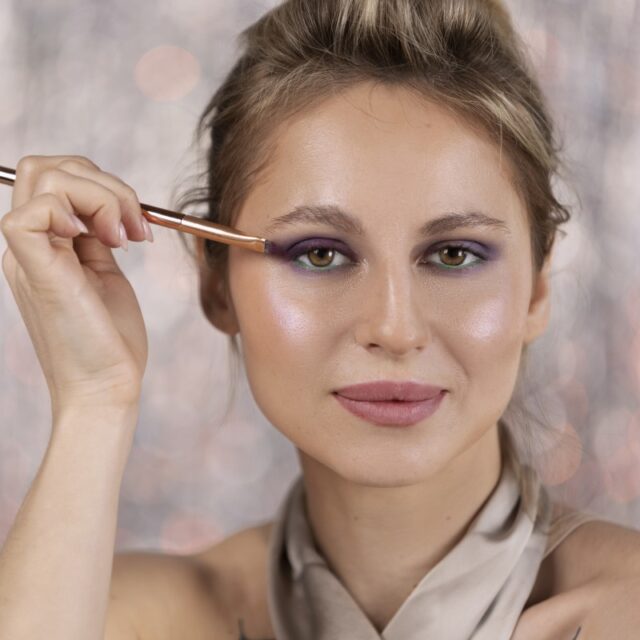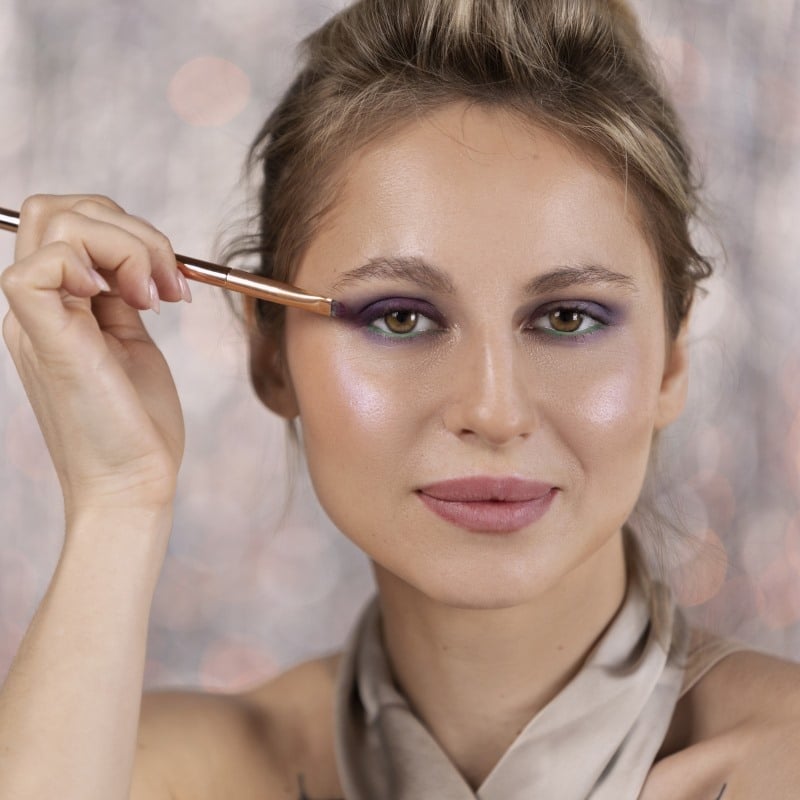
Eyeshadows and eyeliners define the outline of the eye and shape the overall mood of a look. They are among the most visible and creative categories in decorative cosmetics, but they also carry one of the highest compliance burdens. Applied close to the eye, these products interact with tissue that has no natural barrier against contamination. Even small flaws in formulation, preservation, or labeling can lead to irritation, infection, or long-term harm. That is why regulators in the European Union place strict controls on eye-area cosmetics.
For a brand planning to sell in the EU, three steps are mandatory before launch: preparing a Cosmetic Product Safety Report (CPSR), submitting the product in the Cosmetic Products Notification Portal (CPNP), and designing labels that meet the requirements of the EU Cosmetics Regulation (EC No 1223/2009). Each step must be precise, and each one demands different types of supporting data.
In this blog, we explain what those steps look like in practice. We describe why eye products face stricter microbiological limits, what assessors expect in a CPSR cosmetics file, and how to decide if every shade of a palette needs its own report. We also cover the basics of CPNP notification and labeling, with examples from both powder and liquid formats. By the end, you will see how a complete eye makeup CPSR supports safety claims, confirms shelf life, and gives consumers confidence in daily use.
Why Eye-Area Products Face Stricter Controls
Eye products touch thin, exposed tissue. Small flaws can lead to real harm, so the base line is higher. ISO 17516 places eye-area formulas in Category 1. That category limits the total aerobic count to ≤10² CFU per gram or millilitre. Yeasts and molds must be ≤10 CFU. Four pathogens are not allowed at all: Staphylococcus aureus, Pseudomonas aeruginosa, Escherichia coli, and Candida albicans. Most skin creams sit in Category 2, which allows a higher count, so the gap is clear.
Format drives risk. Powder shadows hold little free water, so growth is less likely, but raw minerals and botanicals can carry spores. Liquid liners and gels contain water, so they need stronger preservation and more test data. Felt tips and brush applicators add repeated contact, so the pack design and user guidance matter. A strong eye makeup cpsr explains how the formula, the pack, and the user steps work together.
The Role of Product Format
The product’s format also affects the compliance strategy. For instance, powder eyeshadows have little to no free water, which reduces the likelihood of microbial growth. Microbiological quality tests are still required, though, because raw materials like clays and natural pigments can harbor spores.
However, because cream and gel eyeliners contain both water and oils, they provide the ideal environment for microorganisms to grow. Strong preservative systems are necessary for these formulations, and preservative efficacy testing, also known as challenge tests, is typically required to show long-term stability. The greatest risk is associated with liquid eyeliners that require applicators. Contamination occurs each time a brush or felt-tip applicator comes into contact with the eye and is put back into the bottle. For this reason, clear shelf-life instructions and packaging design are crucial components of compliance for these products.
What a CPSR covers for eye products
The CPSR cosmetics file has two parts. Part A compiles data. Part B states the assessor’s opinion.
Part A tells a detailed story. The assessor reads the full formula, with CI numbers for every pigment and supplier papers for impurities. Micro reports show ISO 17516 Category 1 limits are met. Liquid products include preservative efficacy data, often a challenge test. Stability shows that the shade, texture, and pack hold up across time and heat. Exposure estimates show how much product a person applies, how often, and where on the face.
Part B gives the expert view. The assessor checks if pigments match Annex IV of the EU Cosmetics Regulation (EC No 1223/2009). They check heavy metal limits, the strength of the preservative system, and the way the pack reduces contamination. They set use conditions if needed, like a short PAO or hygiene notes for an applicator. The label must reflect those conditions. A clean eye makeup CPRS removes doubt for launch, audits, and retail partner checks.
Where do cpsr eyeshadow and cpsr eyeliner differ? Powder shadows often rely on low water activity and strict GMP with end-product micro checks. Liquid liners tend to need challenge tests and tighter PAO. Both need pigment control and impurity data. Both must prove safe use near the eye.
Do You Need a Separate CPSR for Each Shade?
When brands introduce eyeshadow palettes or eyeliner collections, this is one of the most frequently asked questions. The formulation determines the response.
It is frequently feasible to cover the whole range with a single CPSR if the base formula is the same for all shades and the pigments are the only difference. A complete pigment palette with a list of all the CI numbers that could be present in the products must be given to the assessor. One CPSR might be enough as long as these pigments are approved by Annex IV of the EU Cosmetics Regulation (EC No 1223/2009) and do not pose any safety hazards.
There are some exceptions, though. The assessor might need a different CPSR if a pigment is subject to stringent limitations, like chromium oxides or ultramarines with particular impurity limits. Similarly, more evaluations might be required if the pigment matrix is extremely broad or contains odd combinations.
See our specialized article: Do I Need a Separate CPSR for Each Scent, Color, or Size? for a more thorough examination of this topic.
CPNP Notification
You file CPNP before any EU sale. The portal stores product data for authorities. The Responsible Person submits the category and name, RP details, country of origin for imports, the first Member State of sale, an urgent contact, and any nanomaterials with full characterisation. You also flag any restricted substances covered by the EU Cosmetics Regulation (EC No 1223/2009).
Eye products often use pigments that may include nano forms. You must get this right. The INCI on pack, the PIF, and the CPNP record must match. Gaps slow market entry and can trigger questions. A careful CPSR cosmetics file makes the CPNP step faster, since the inputs already sit in Part A.
Labeling Requirements
Labels must reflect the EU Cosmetics Regulation (EC No 1223/2009). A buyer must see the Responsible Person’s name and address, the nominal content, a date of minimum durability or a period after opening, any needed precautions, the batch or lot, the product function if it is not obvious, and a full INCI in order of weight. Ingredients under one percent can come after the rest. Shade ranges often use the “+/- (may contain)” format to list CI numbers. Every listed colorant must be allowed. Pigments banned in Annex II do not belong in eye products in any form.
This is where CPSR eyeliner and CPSR eyeshadow both feed the label. If the assessor asks for hygiene notes, put them on pack. If the PAO is short, state it clearly. A label that matches the file is the fastest way to pass checks at borders and in retail audits.
Microbiological Category 1 in Practice
Category 1 demands control in the lab and on the line. Raw materials need clean specs and supplier reviews. The factory needs strong GMP, clean rooms, and trained staff. Pressing powders call for low humidity and clean tooling. Filling liquids calls for clean lines and tight closure torque. Stability and preservative tests back up the numbers. Micro limits on the final product close the loop.
Packaging can raise or lower risk. Air-tight jars and well-sealed vials slow contamination. Applicators that avoid backflow and reduce contact area help. Clear user steps help too. Tell buyers not to share liners, and to close the cap at once. A clear eye makeup CPSR should connect each of these choices to risk control so the logic is easy to follow.
Common pitfalls and how to avoid them
Many projects stumble on pigments. A supplier may swap a grade late in the project, and impurity levels change. Fix this with locked specs and COAs in the PIF. Another weak spot is mismatched data. Teams update the formula, but they forget to update the CPNP or label, so fields drift apart. Fix this with a single source of truth and a pre-launch check.
Liquid liners often fail due to poor preservation. A nice tip or a glossy finish will not mask a weak challenge test. Pick a system with a safety margin and keep the pH and water activity in range. Avoid applicators that pump air into the pack. Test at cold, room, and high-heat storage to spot early shifts in viscosity and color.
Timelines slip when a brand plans a palette with too many edge shades. A wide pigment matrix loads the CPSR with extra cases and makes lab work heavy. Cut what you do not need for launch. Add stretch shades in phase two once the base wins trust.
How to structure your project plan
Start with the formula and pigment matrix. Lock the base early. Map CI numbers and max levels. Send this to your assessor. Run micro checks on pilot batches and confirm Category 1 limits. For powders, add final micro tests and stability under heat and humidity. For liquids, run a challenge test and full stability. Fix the pack and applicator once the test data lands. Then complete the CPSR eyeshadow or CPSR eyeliner file, file CPNP, and print labels.
A simple timeline helps: formula freeze, pilot build, test start, first readout, fix or confirm, final build, CPSR sign-off, CPNP, print. Keep these dates real. Each move depends on the last one, so pad the plan for repeat tests.
Frequently Asked Questions
Q1: Is testing for preservative efficacy necessary for pressed eyeshadows?
Because of their low water activity, powders typically don’t need challenge testing. GMP must be closely followed, though, and microbiological quality tests are still required.
Q2: Is it possible for one CPSR to cover several eyeshadow or eyeliner shades?
Yes, provided that the pigments are within a palette that has been approved by the assessor and the base formula is the same. However, distinct CPSRs might be needed for pigment restrictions or unusual color combinations.
Q3: What needs to be in the notification for CPNP?
Details about the product category, the Responsible Person, the country of origin, the Member State where the product was first placed, the emergency contact, the use of nanomaterials, and the substances that are prohibited by the EU Cosmetics Regulation (EC No 1223/2009).
Q4: What items must be labeled?
Details of the Responsible Person, content, batch number, product function, date of minimum durability or PAO, and an exhaustive INCI list.
Q5: What microbiological restrictions are applicable to products used in the eye area?
Category 1: complete absence of specified pathogens, ≤10² CFU/g for bacteria, and ≤10 CFU/g for yeasts/molds.
Conclusion
Strict science and artistry are combined in eyeshadows and eyeliners. More than just innovative formulations are needed to get them onto the EU market; all phases of the regulatory framework must be followed. Brands can safeguard consumers and foster consumer confidence in their products by creating labels that adhere to the EU Cosmetics Regulation (EC No 1223/2009), submitting accurate CPNP notifications, and creating a comprehensive CPSR.
We at Certified Cosmetics help brands at every step of this procedure. Our staff makes sure your eye cosmetics fulfill the strictest compliance requirements, from stability and microbiological testing to safety evaluations and labeling reviews. To learn more about EU cosmetic regulations, check out our CPNP and CPSR eyeshadow and CPSR eyeliner services page or browse our blog library.

